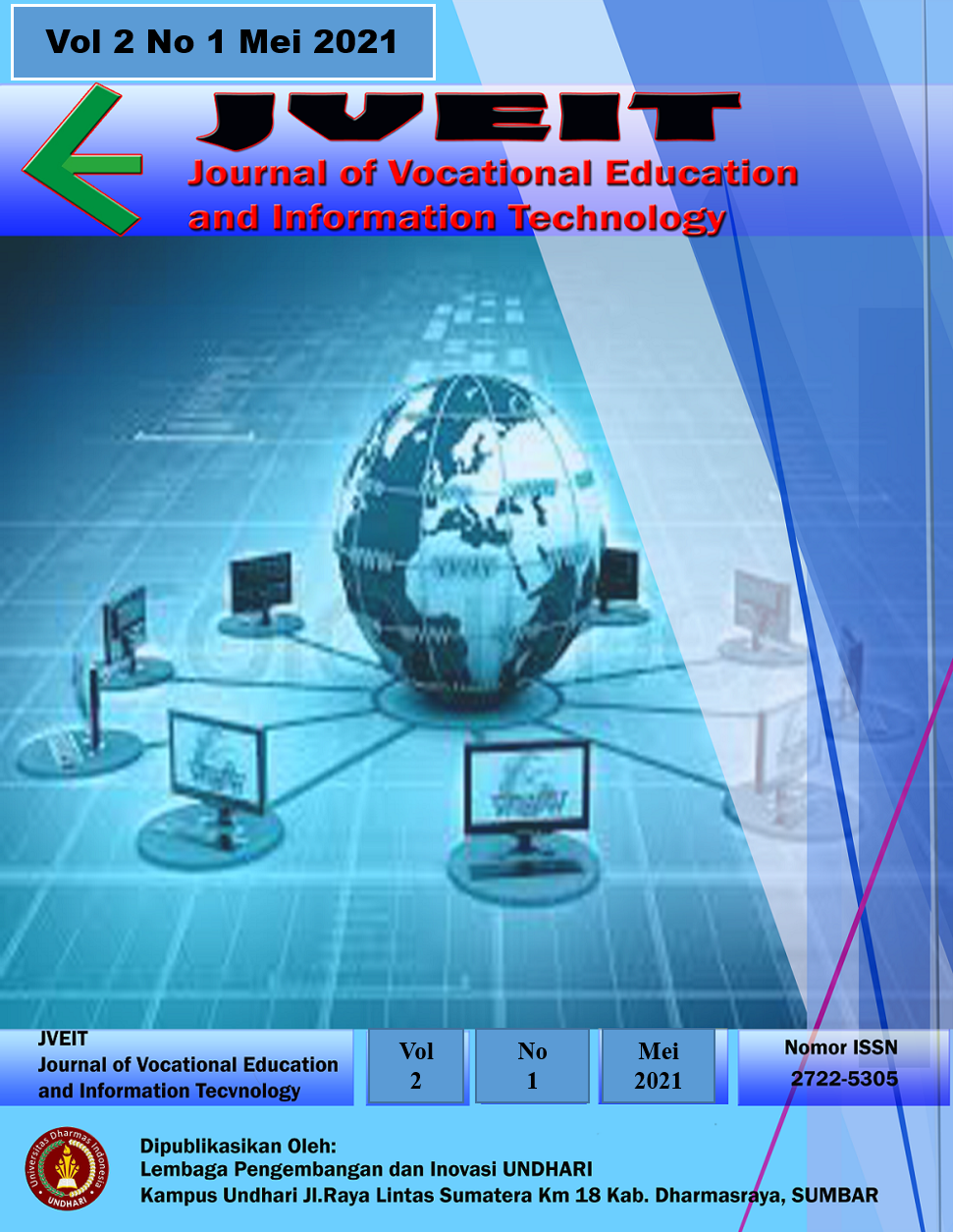Efforts to Increase Student Motivation Through Peer Tutor Group Guidance in Class X IPS 1
Upaya Meningkatan Motivasi Belajar Siswa Melalui Bimbingan Kelompok Tutor Sebaya Pada Kelas X IPS 1
DOI:
https://doi.org/10.56667/jveit.v2i1.230Keywords:
*Classroom Action Research, * Learning Motivation, *Group GuidanceAbstract
This study investigates problem of learning anxiety experienced by students and shows that. This is very important because developmental task that adolescent students must have is Emotional independence which will support him / her to develop their personality, complete study assignments and plan future careers. Most of students in guidance class did not understand how to deal with learning anxiety problems. Research method chosen was classroom action research (PTK) whose activities were based on cycle consisting of planning, implementing actions, observing and reflecting. Development of cycle depends on the reflection that is done in each cycle. Tools used were observation guidelines and reflection notes for each cycle. Way to draw conclusions to process the data quantitatively and describe results qualitatively. The findings in the study were: 1) level of student anxiety showed that behavioral group counseling showed a decrease in the level of student anxiety seen from an average value of 18 or 51.43% to 3 (8.75%) which indicated a significant reduction in anxiety problems. , 2) seen that student's activeness shows an increase in percentage from 34.29% in first cycle to 85.71% in second cycle, which means that with behavioral counseling all students can be actively involved in activities aimed at alleviating anxiety problems they experience. Conclusion is that behavioral group counseling can reduce student learning anxiety, which changes students' understanding of importance of reducing anxiety in learning. So, authors suggest that behavioral group coaching can be applied not only to coaching activities, but also learning activities in general.
Downloads
References
A. Pane and M. D. Dasopang, “Belajar dan Pembelajaran,” J. Kaji. Ilmu-ilmu Keislam., vol. 03, no. 02, 2017.
A. Emda, “Kedudukan Motivasi Belajar Siswa Dalam Pembelajaran,” Lantanida J., vol. 5, no. 2, 2017.
A. Arsyad, Media Pembelajaran. Jakarta.: PT. Raja Grafindo Persada, 2011.
M. Z. Winarni, M., Anjariah, S., & Romas, “Motivasi Belajar Ditinjau Dari Dukungan Sosial Orangtua Pada Siswa SMA,” J. Psikol., vol. 2, no. 1, 2016.
M. Muhammad, “Pengaruh Motivasi dalam Pembelajaran,” Lantanida J., vol. 4, no. 2, 2016.
Monika and Adman, “Peran efikasi diri dan motivasi belajar dalam meningkatkan hasil belajar siswa sekolah menengah kejuruan,” J. Pendidik. Manaj. Perkantoran, vol. 2, no. 2, 2017.
D. . Puspitasari, “Hubungan antara Persepsi terhadap Iklim Kelas dengan Motivasi Belajar Siswa SMP Negeri 1 Bancak,” EMPATHY J. Fak. Psikol., vol. 82, no. 1, 2013.
G. H. dan L. Agustina, “Pengaruh Motivasi Belajar SIswa terhadap Prestasi Belajar IPA di Sekolah Dasar,” J. Penelit. Pendidik., vol. 12, no. 1, 2011.
S. A. M, Interaksi dan Motivasi Belajar Mengajar. Jakarta: Raja Grafindo Persada, 2010.
M. Hamzah B. Uno, Teori motivasi dan pengukurannya. Jakarta: PT Bumi Aksara, 2010.
S. Suryabrata, Psikologi Pendidikan. Jakarta, 2011.
S. J. W. Adolescence, Perkembangan Remaja Edisi Keenam. Jakarta: Erlangga, 2003.
D. S. Bahri, Strategi Belajar Mengajar. Jakarta: Rineka Cipta, 2002.
D. Anni, Catharina Tri, Psikologi Belajar. Semarang: Universitas Negeri Semarang Press, 2006.
Mulyasa, Pengembangan dan Implementasi Kurikulum 2013. Bandung: Remaja Rosdakarya, 2014.
S. Arikunto, Prosedur Penelitian Suatu Pendekatan Praktik. Edisi Revisi 6. Jakarta: Rineka Cipta, 2009.









